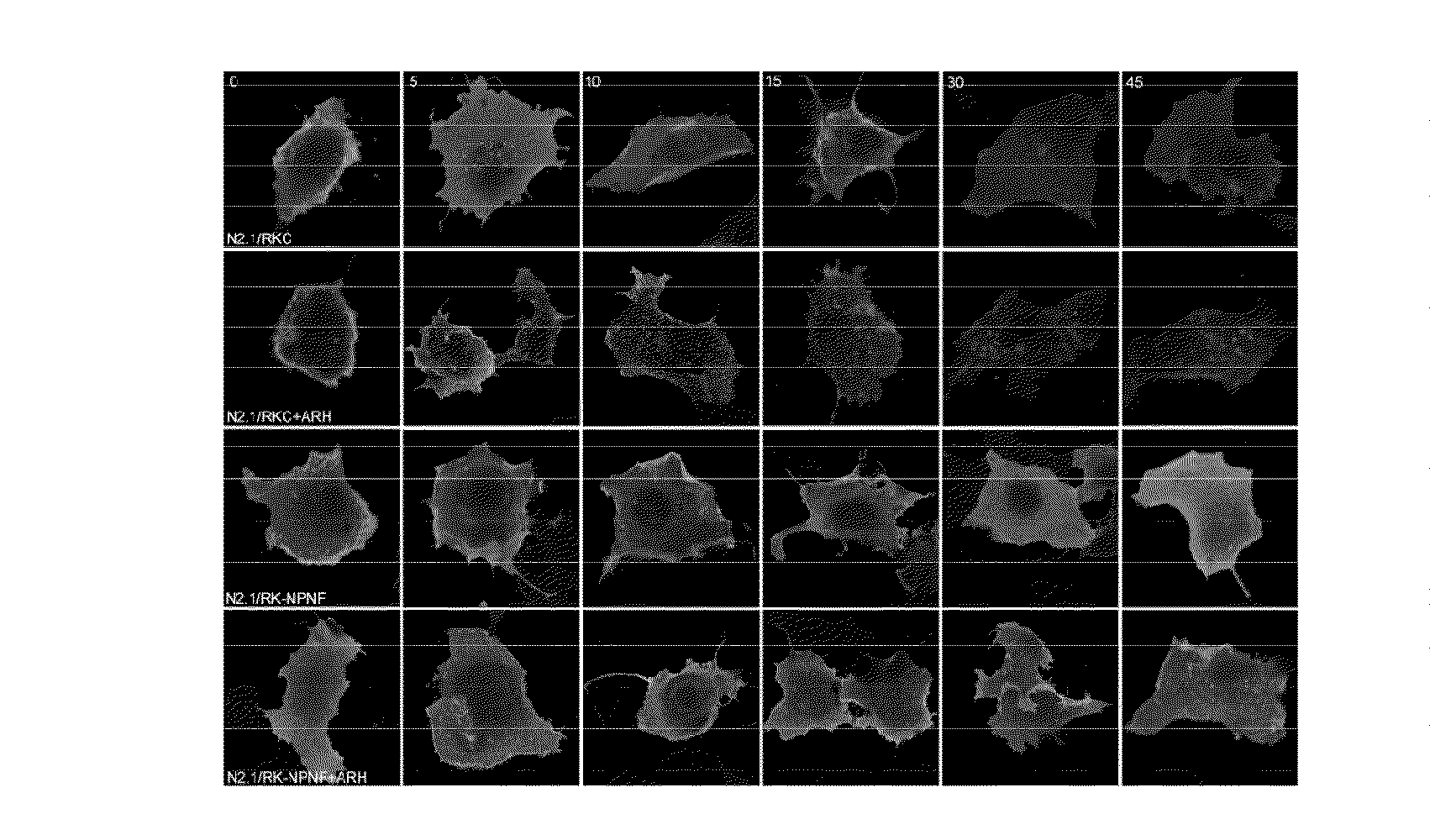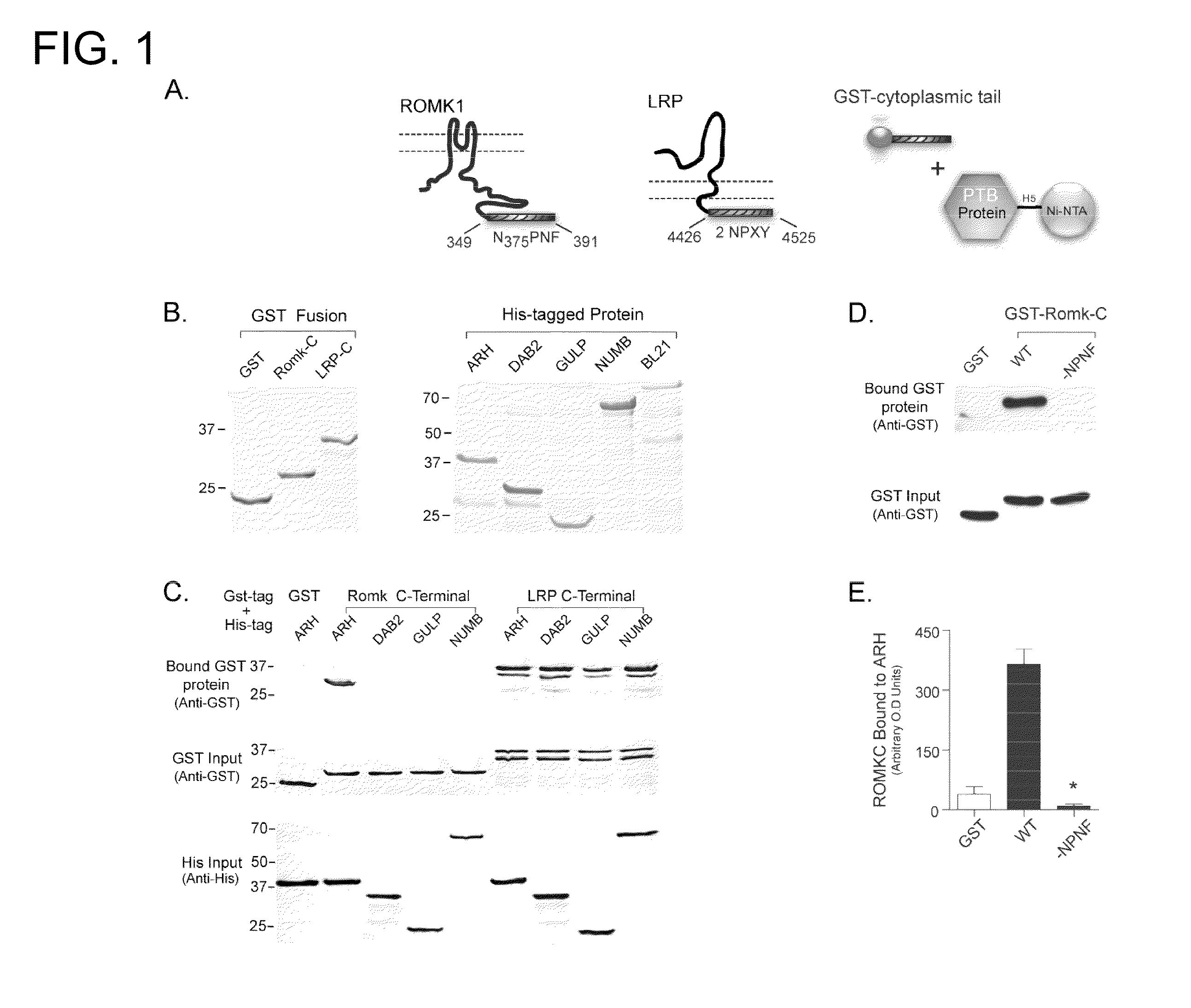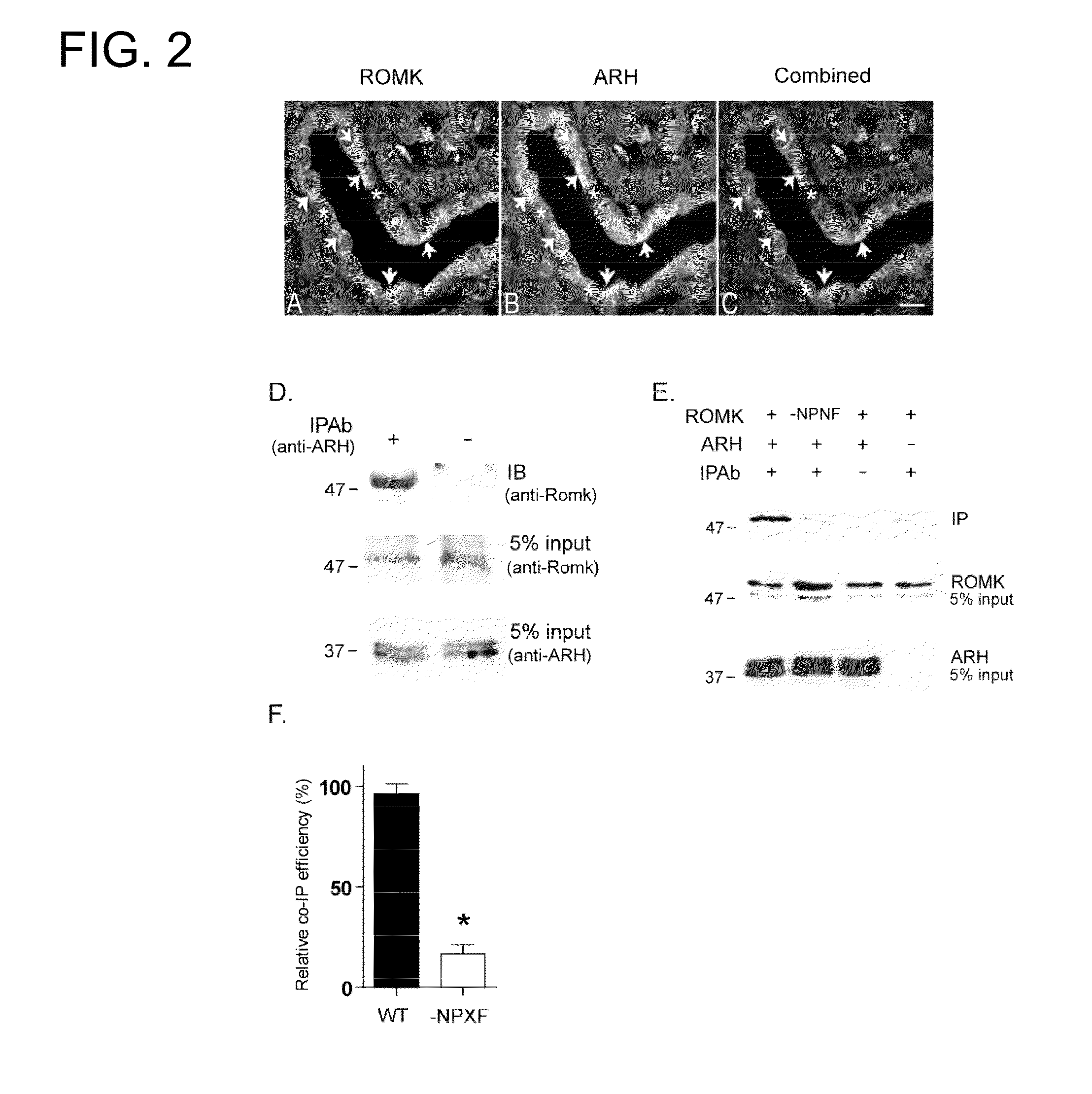Methods for regulating urinary potassium
a technology of urinary potassium and osmotic acid, applied in the direction of drug compositions, peptide/protein ingredients, extracellular fluid disorder, etc., can solve the problems of life-threatening clinical conditions, long-term potassium imbalance and secondary hyperkalemia, severe injury of both skeletal and smooth muscle cells, etc., and achieve the effect of increasing romk endocytosis
- Summary
- Abstract
- Description
- Claims
- Application Information
AI Technical Summary
Benefits of technology
Problems solved by technology
Method used
Image
Examples
examples
Experimental Procedures
[0120]A. Molecular Biology—All studies were performed with the modified rat ROMK1, containing an external hemagglutinin (HA) epitope tag as described before. Site-directed mutagenesis was performed using a PCR-based strategy with PfuTubo DNA polymerase (QuikChange, Stratagene). The sequence of all modified cDNAs was confirmed by dye termination DNA sequencing (University of Maryland School of Medicine Biopolymer Core). cDNAs encoding ROMK1 cytoplasmic COOH(C)-terminal regions (amino acids 349-391) were amplified by PCR from a full-length template (GenBank NM—017023) and cloned in-frame with GST in the fusion expression vector pGEX-5× (Amersham Biosciences). Adaptor proteins (ARH, DAB2, GULP, NUMB) whole length or fragment containing PTB domain were cloned into pRSET vector (Invitrogen) as His-tagged fusion proteins. All constructs used for mammalian expression were subcloned into pcDNA 3.1+ (Invitrogen). GST LRP C-terminal expressing vector was generously prov...
PUM
 Login to View More
Login to View More Abstract
Description
Claims
Application Information
 Login to View More
Login to View More - R&D
- Intellectual Property
- Life Sciences
- Materials
- Tech Scout
- Unparalleled Data Quality
- Higher Quality Content
- 60% Fewer Hallucinations
Browse by: Latest US Patents, China's latest patents, Technical Efficacy Thesaurus, Application Domain, Technology Topic, Popular Technical Reports.
© 2025 PatSnap. All rights reserved.Legal|Privacy policy|Modern Slavery Act Transparency Statement|Sitemap|About US| Contact US: help@patsnap.com



